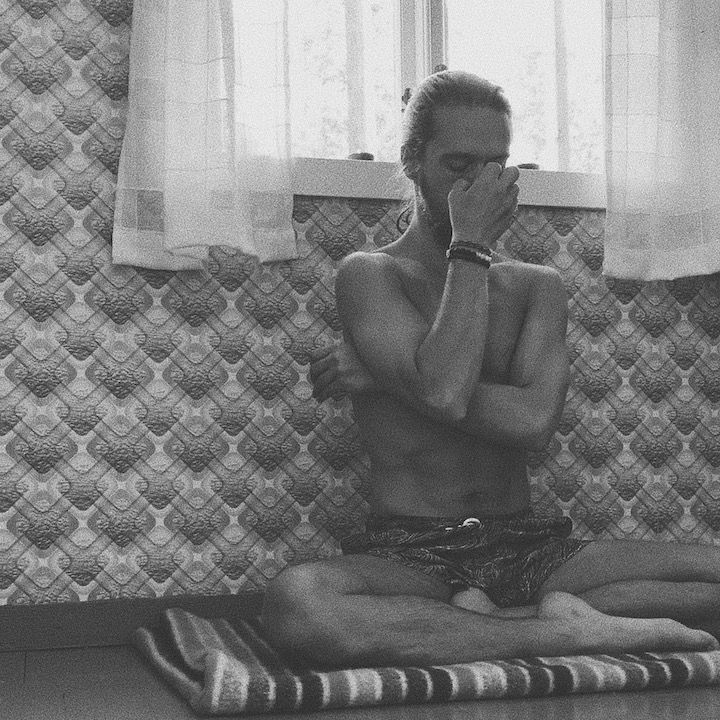Tips for Safe and Effective Breathwork
After some years of practicing pranayama(breathwork) on and off, I have gained some clarity as to how to build and start the practice gently and how to sustain it for longer periods of time. The following pointers are meant especially for those that are just starting out but can be valuable insights for those that have been practicing for some time.
1: Dont overdo it.
Go slow and take days off. When starting a practice I recommend doing it every other day, one day practice, and one day off, after about a month increase to two days practice and one day off. Increase slowly like that, but do it no more than six days in row. Even God rests one day a week.
You want to go slowly and steadily as there are profound changes taking place in your nervous system and hormonal system especially. The body needs time to integrate these changes and the space between sessions also gives you time to observe these changes and the more immediate effects of your practice.
For the first six months practice only once a day, but after a while you could add a second session on some days of the week
2: Tension.
There should be little to no unneeded tension in the body while retaining the breath. Make a habit of scanning the body for tension when breathing, especially during retentions. If there is agitation or even pain ease off a little bit.
Breathwork can potentially bring more agitation and stress to the nervous system if done improperly so don’t push yourself too hard. It is better to have a smooth and enjoyable retention that is a bit shorter than having a longer one that results in tension, agitation or even a blackout.
Be especially aware of the neck, shoulders, upper back, facial muscles and muscles surrounding the cranium. Breathwork is a practice of mindfulness.

TAKE A COURSE
Pranayama Fundamentals
This course will teach you the basics of four different traditional Hatha Yoga breathing techniques including description, demonstration and instruction video for each pranayama + guidance, esoteric knowledge and philosophy for safe and effective breath work.
Sign up3: When to practice breathwork.
In my own experience I have the best results and most ease in my practice if I practice first thing in the morning after yoga or some light stretching and movement. The mind is still quiet and its easier to stay focused. Notice that the retentions are longer and more comfortable when the mind is calm and quiet.
When one arrests(stops) the prana(breath) the mind automatically stops, and when one arrests the mind; the prana automatically follows. Practice on an empty stomach. This is key. It makes it a lot more comfortable, especially on the external retention.
4: Diet.
Doing breathwork, pranayama moves a lot of energy through our system and if there are blockages in an energy pathway they imbalance it manifests can be exacerbated. In more ancient times doing breathwork where restricted to those who had done preliminary work on themselves in form of yoga asana(postures), cleansing techniques and followed a certain diet and lifestyle for some time.
We are working with the quickly moving wind element and so need clean but grounding food. In the beginning stages of practice it is very important to get enough healthy fats in the diet. Ghee from ethical raised cows or high quality fish oil is most preferable, but saturated fats from nuts and coconut are also excellent.
There are two reasons saturated fats are very important in the beginning stages. One: the body and brain are creating new neural pathways and connections and the nerves need saturated fats to build its insulating layer called myelin. Two: glandular hormonal secretions and balance might change. Glands that have been underperforming might start coming online and glands that have been overactive might calm down. Saturated fats are a key role in producing a healthy hormonal balance, both for men and women.
5: Am I doing it right?
Some signs you might be overdoing it, or have some issue that needs to be resolved before you can continue practice.
Headaches. If your practice results in headache during or right after practice you are definitely pushing to hard. There is a caveat however, if the breathwork leads to detox you might have headache due to toxins being secreted into the blood for detox. Please consult with health personal that you trust for guidance.
Agitation, anxiety and anger during the day. Breathwork can also lead to emotional “detoxification”. If you feel out of sorts, spacey, agitated or tense in your day after practicing, this might be an uncomfortable symptom that healing is taking place, but can be disruptive to your life experience. Take a day off and start slowly again, don’t retain for as long as you absolutely can. Be aware of tension building during retention.
6: Keep a journal
Monitor how breathwork makes you feel. Write down how it felt during the work itself and during or at the end of the day how you felt during the day. Where you calmer and more energised or tenser and more agitated?
